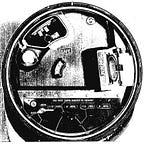Terrorist Groups Now Have More Anti-Tank Guided Missiles Than Ever
Tank killers spread throughout the Middle East
by ADAM RAWNSLEY
Fire up YouTube or Twitter and you can follow America’s covert weapons pipeline as it goes awry in Syria. Videos and pictures show American TOW anti-tank guided missiles moving from hand-picked rebel proxy groups into the arms of global jihadists such as Jabhat Al Nusrah.
But America isn’t the only country whose weapons shipments are getting away from their intended recipients in the Middle East.
With much less media fanfare, Russia’s shipments of Kornet anti-tank guided missiles to its allies have leaked into the hands of terrorist groups.
In Iraq, Syria, Sudan and elsewhere, both state militaries and insurgents use Kornet weapons on the battlefield. The proliferating missiles raise the threat that terrorist groups could use them off the battlefield to kill civilians.
“It’s undeniable that there are more Kornets in the hands of non-state actors than there ever have been before,” Nic Jenzen-Jones, director of the Armament Research Services consultancy group, told War Is Boring.
These small, portable weapons can destroy the world’s most modern tanks from miles away. The 9K135 Kornet, made in Russia by KBP Instrument Design Bureau, can fire a missile with either a thermobaric or tandem high explosive anti-tank — or HEAT — warhead.
The latter warhead, used on the standard 9M133–1, is the most commonly seen in recent conflicts. It uses a shaped charge warhead which can pierce standard armor 1,000–1,200 millimeters thick.
Jenzen-Jones and his team at Armament Research know what they’re talking about — they’re professionals who track and analyze weapons for governments and non-government organizations. They’ve kept a close eye on the proliferating Kornets.
So far, they’ve only seen the HEAT version appear in the wild.
The Kornet system uses a laser beam to direct a missile toward its target at listed ranges of up to 5.5 kilometers. Though its specs might sound impressive on paper, it’s important to keep in mind where the Kornet ranks in the wider universe of anti-tank weapons.
“The suggestion that it is a state-of-the-art anti-tank guided weapon is not strictly true,” Jenzen-Jones said. “It is comparatively modern compared to the anti-tank weapons used by non-state groups.”
But it provides a relative enough advantage to make the Kornet a choice item on terror groups’ shopping lists. Russia’s decision to sell Kornets to Syria and the country’s subsequent descent into civil war has given militants access to the weapon like never before.
Thanks to the shifting battle lines in Syria, the regime’s missile stockpiles are occasionally vulnerable to looting and theft.
Rebels have taken advantage of it. In September 2014, Armament Research found a video by a Free Syrian Army-aligned rebel group showing off crates of Kornets in the its possession.
Islamic State jihadists also appear to have benefited from vulnerable Syrian Kornets. As early as April 2014, and at least as recently as January, the jihadist group published pictures showing its fighters using Kornets against Iraqi forces.
To be sure, terrorist groups have had access to Kornets for years, but only through state-directed transfers.
During Israel’s 2006 war with Hezbollah, the Lebanese militant group surprised the Israel Defense Forces with an extensive arsenal of Kornets and other Russian anti-tank missiles.
Hezbollah used the Kornets to destroy two Merkava-4 tanks — Israel’s most modern main battle tank — at the battle of Saluki. Israeli forces reportedly found Kornet crates in villages near the battle with markings indicating that the weapons had come from Syria.
More recently, Hezbollah fighters used the missiles to kill two IDF soldiers in apparent retaliation for Israel’s assassination of Jihad Mughniyeh, the son of Hezbollah’s legendary terrorist kingpin, Imad.
Outside of Syria, Russia has found new customers for the Kornet, both state and non-state, leading to new threats of proliferation.
Iraqi media outlets reported that Baghdad’s army ordered Kornets and used them for the first time in September 2014. If the U.S. experience arming Iraq is any guide, Iraq’s slipshod accounting and loose security puts the weapons at risk of slipping from state control.
Iranian-backed Iraqi Shi’ite militias — such as Harakat Al Nujaba — have already showed off videos of their fighters using what appears to be a Kornet during the battle for Takrit.
The Iraqi military has long been a source of weapons for Shi’ite militias.
Iran, which has provided arms to Iraqi militia proxies in Iraq, also has a version of the Kornet, the Dehlaviyeh. But its origin — reverse engineered or produced under license from Russia — is unclear. The same goes for Harakat Al Nujaba’s missiles.
In Ukraine, Armament Research found further evidence that pro-Russian rebels are using Kornets. Pictures from the fighting near Luhansk and Starobesheve show fragments of Kornet missiles — missiles which aren’t in the Ukrainian military’s arsenals.
And in Sudan, the group discovered that Russian Kornet shipments to Khartoum have — once again — landed in the hands of insurgents from the Sudan People’s Liberation Movement-North.
The proliferation of Kornets even before the war in Syria demonstrated that the threat to civilians from these weapons is more than theoretical. In a 2011 attack, Hamas critically wounded a child when the group fired a Kornet at an Israeli school bus.
But now relatively advanced anti-tank weapons have spread even further.
America’s tentative supply of TOW anti-tank guided missiles to shaky “moderate” Syrian rebel groups has already led to some of the weapons ending up in the hands of Al Qaeda-linked jihadists.
With Russia dumping Kornets on it allies, the threat to civilians may be greater — and linger long after the current wars end.
